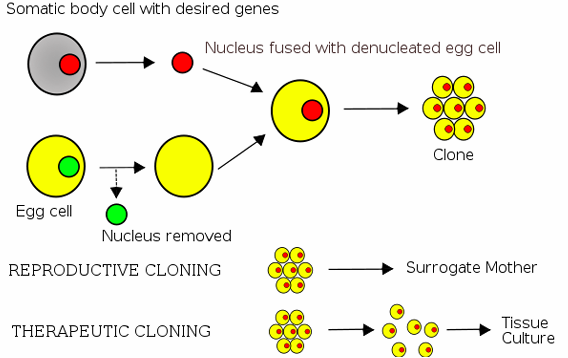cellular differentiation and stem cells
1/14
There's no tags or description
Looks like no tags are added yet.
Name | Mastery | Learn | Test | Matching | Spaced |
|---|
No study sessions yet.
15 Terms
cell differentiation
process by which a less specialized cell becomes a more specialized cell type
all the cells arise from a single fertilized egg, contains the same DNA in their nuclei but become different to each other to form the various structures, tissues and organs and carry out their functions
control of cellular differentiation
all cells contain the same DNA but not all genes expressed in all cells
differential gene expression: cells become different because they express different genes
during development different cell types follow different differentiation programs
occurs in adults as well: adult stem cells divide and create fully differentiated daughter cells during tissue repair and normal cell turnover
stem cells
undifferentiated cells that divide and give rise to cells that differentiate into specialized cells
self renewal - maintains the stem cell pool
differentiating - replaces dead or damaged cells throughout your life e.g. muscle cell, nerve cell. cannot divide or make copies of itself
stem cell niches
microenvironment around stem cells that provides support and the signals that regulate self renewal and differentiation
direct contact - between niche and the stem cell
soluble factors - secreted by niche cell to act on the stem cell
intermediate cell - signal from the niche that acts on an intermediate cell which then acts on stem cell or secrete soluble factors

sources of stem cells
embryonic stem cells
tissue stem cells
induced pluripotent stem cells
stem cell terminology
multipotent - can make multiple types of specialized cells, but not all types. tissue cells are multipotent
pluripotent - can make all types of specialized cells in the body. lack potential to contribute to extraembryonic tissue such as placenta. embryonic stem cells from ICM are pluripotent
totipotent - can make all types of cells plus cells that are only needed during development of the embryo e.g. placenta, umbilical cord. early embryonic cells are totipotent
embryonic stem cells
found inf the blastocyst (very early embryo)
embryonic stem cells taken from the inner cell mass of the blastocyst and are cultured in a lab to grow more
through differentiation they can make all possible types of specialized cells, depending on the conditions they are grown under
tissue stem cells
can be found in the surface of the eye, brain, skin, breast, intestines, testicles, bone marrow and muscles
through differentiation the blood stem cell found in bone marrow makes only specialized types of blood cells: red blood cells, white blood cells, platelets.
multipotent: tissue stem cells can only give rise to the kinds of cell found in the tissue they belong to
principles of renewing tissues
stem cell: self renewal, divide rarely, higher potency, rare → committed progenitors: transient amplifying cells, multipotent, divide rapidly, no self renewal → specialized cells: do work, do not divide
hematopoietic stem cells: HSC → committed progenitors (many) → specialized cells (T cell, B cell, dendritic cell, erythrocytes etc.)
mesenchymal stem cells: MSC → committed progenitors (small amount) → specialized cells (bone(osteoblasts), cartilage(chondrocytes), fat(adipocytes))
induced pluripotent (IPS) stem cells
behaves like an embryonic cell
genetic reprogramming = add certain genes to the cell
advantage: no need for embryos, genetically identical
disadvantages: large number of somatic cells needed long term studies still required
reproductive cloning
live birth cloning. Use to make two identical individuals. Illegal on humans
take the cell containing DNA from the original subject. take a separate egg and remove the nucleus and take the rest of the cell and combine the two
somatic cell transfer
lab technique used for creating a clone embryo with a donor nucleus
important where there is a high probability of offspring having a genetic disease

therapeutic cloning
experimental cloning. Use to make patient specific cell lines isolated from an embryo (not intended for transfer in utero)
transfer of nuclear material from a somatic cell into an enucleated oocyte with the goal of deriving embryonic stem cell lines with the same genome as the nuclear donor
little to no risk of rejecting transplanted cells/tissues - immunology compatible with patient
ethical concerns and technical challenges

applications of stem cells
regenerative medicine - potential to treat diseases by replacing cells which are irreversible lost or damaged, and for which there are currently no therapies e.g. parkinson’s disease, heart disease etc. Bone marrow transplants and skin grafting are established examples for therapeutic use of stem cells
drug testing and screening
study disease processes
regulation of stem cell research
legislation regarding use of ES cells varies around the globe. many countries, new cell lines can be created from spare embryos from fertility clinics with the consent from the donors. laws prohibit the creation of embryos for research
Ireland has no regulations on stem cell research